Table of Contents
Categories
-
Adapter Sleeves (9)
-
Ball Bearings (11)
-
Ball Screw Bearings (2)
-
Ceramic Bearings (27)
-
Pillow Block Bearings (4)
-
Plain Bearings (32)
-
Roller Bearings (12)
-
Slewing Bearings (43)
-
Sliding Block (3)
-
Stainless Steel Bearings (27)
-
Super Precision Bearings (6)
-
Thin Section Bearings (9)
-
Track Rollers (4)
-
Universal Joints (1)
The working principle and manufacturing process of self-lubricating bearings

Introduction
Self-lubricating bearings, pivotal in industrial machinery, provide optimal efficiency and minimal maintenance. Engineers and professionals must grasp the nuanced workings and production intricacies. This comprehensive blog post meticulously examines the multifaceted realm of self-lubricating bearings, shedding light on their intricate mechanisms, the array of advantages they offer, the diverse materials involved, crucial design considerations, the exacting manufacturing processes, and their wide-ranging applications across industries. Delve into this exploration for an in-depth understanding that bridges theory and practical application in the dynamic landscape of bearing technology.
Significance in reducing maintenance
The significance of self-lubricating bearings in reducing maintenance lies in their ability to operate efficiently without the constant need for external lubrication. Traditional bearings often require regular maintenance schedules involving lubricant replenishment, which can be time-consuming and labor-intensive. In contrast, self-lubricating bearings mitigate these challenges by incorporating materials that provide inherent lubrication. This inherent lubrication minimizes friction and wear during operation, leading to longer intervals between maintenance tasks. The reduced dependency on external lubrication not only streamlines maintenance efforts but also enhances the reliability of machinery and equipment. Self-lubricating bearings, by virtue of their low-maintenance nature, contribute to increased operational uptime and cost savings in various industrial applications.
Understanding Self-Lubricating Bearings
Definition of Self-lubricating Bearings
Self-lubricating bearings, also known as plain bearings or bushings, are innovative mechanical components designed to operate without the need for external lubrication. Unlike traditional bearings that rely on oil or grease for smooth functioning, self-lubricating bearings incorporate materials with inherent lubricating properties. These materials, such as PTFE (polytetrafluoroethylene) or graphite, are embedded within the bearing structure. As the bearing moves, these lubricating elements reduce friction and wear, enhancing performance and extending the bearing’s lifespan. This self-sufficient lubrication mechanism makes these bearings ideal for applications where regular maintenance or continuous external lubrication may be impractical or challenging. The self-lubricating design contributes to increased efficiency, reliability, and reduced maintenance requirements in various industrial and mechanical systems.
The Working Principle of Self-Lubricating Bearings
- Basic functionality
Self-lubricating bearings serve essential functions in mechanical systems by offering inherent lubrication, eliminating the need for external lubricants. These bearings are designed with materials like PTFE, graphite, or other solid lubricants embedded within their structure. The primary function is to reduce friction between moving parts during operation, preventing wear and enhancing overall efficiency. As the bearing moves, the embedded lubricating elements provide a continuous and self-sufficient lubrication mechanism. This not only ensures smooth motion but also extends the lifespan of the bearing by minimizing wear and tear. Additionally, self-lubricating bearings contribute to noise reduction, as the inherent lubrication minimizes friction-induced vibrations. Their versatility and ability to operate effectively in various conditions make them integral components in machinery across diverse industries, offering improved performance and reliability.
- Self-lubrication mechanism
The self-lubricating mechanism of self-lubricating bearings revolves around the incorporation of specialized materials within their structure, ensuring continuous lubrication during operation. These materials, often including PTFE (polytetrafluoroethylene), graphite, or other solid lubricants, are strategically placed in the bearing composition. As the bearing moves, these embedded lubricating elements release a consistent layer of lubrication between moving surfaces. The friction generated during motion activates the self-lubricating properties of these materials, forming a protective film that minimizes direct metal-to-metal contact. This lubricating film not only reduces friction but also acts as a barrier against wear, extending the bearing’s operational life. The self-sufficient nature of this mechanism eliminates the need for external lubrication, making self-lubricating bearings ideal for applications where maintenance simplicity and operational reliability are paramount.

Types of Self-Lubricating Bearings
- Metal-based bearings
Metal-based bearings are a notable category within the realm of self-lubricating bearings, characterized by their composition and inherent lubricating properties. Unlike traditional bearings that often rely on external lubrication, metal-based self-lubricating bearings incorporate metals such as bronze or steel along with solid lubricants within their structure. These solid lubricants, often in the form of graphite or other self-lubricating materials, are strategically placed to provide continuous lubrication during operation. The metal matrix enhances the bearing’s strength and durability, while the embedded lubricants contribute to reduced friction and wear. This combination results in reliable and efficient performance, making metal-based self-lubricating bearings well-suited for applications where robustness and self-sufficient lubrication are crucial factors.
- Polymer-based bearings
Polymer-based bearings represent a distinct category within the family of self-lubricating bearings, distinguished by their composition and functional characteristics. These bearings utilize polymers, often reinforced with fibers or other additives, as the primary material in their construction. The polymer matrix is carefully engineered to exhibit inherent lubricating properties, reducing the dependency on external lubricants. Materials such as PTFE (polytetrafluoroethylene) or nylon are commonly employed in polymer-based bearings for their self-lubricating attributes. The polymer’s low-friction nature facilitates smooth motion and minimizes wear between moving parts. This design not only enhances operational efficiency but also contributes to a longer lifespan for the bearing. Polymer-based self-lubricating bearings find applications in diverse industries where low maintenance, corrosion resistance, and reliable performance are essential considerations.
- Composite bearings
Composite bearings represent a versatile category within the spectrum of self-lubricating bearings, blending different materials to achieve optimal performance. These bearings are composed of a combination of materials, typically a matrix of polymers or resins reinforced with fibers such as fiberglass or aramid. The synergistic properties of these materials result in a bearing that is not only self-lubricating but also possesses high strength, wear resistance, and low friction. The composite nature allows for customization based on specific application requirements, making them suitable for a wide range of industrial applications. By integrating self-lubricating elements within a durable composite structure, these bearings offer a reliable and efficient solution, often with enhanced performance characteristics tailored to meet the demands of challenging operating conditions.
Materials for Self-Lubricating Bearings
Polytetrafluoroethylene (PTFE):
- Characteristics: PTFE is a high-performance polymer known for its low friction, chemical resistance, and wide temperature range tolerance.
- Role in Lubrication: PTFE acts as a solid lubricant in self-lubricating bearings, creating a slippery surface that reduces friction and wear between moving parts.
Graphite:
- Characteristics: Graphite is a solid lubricant with excellent lubricating properties, thermal stability, and resistance to high temperatures.
- Role in Lubrication: Graphite in self-lubricating bearings forms a lubricating film that minimizes friction, ensuring smooth operation and preventing metal-to-metal contact.
Bronze:
- Characteristics: Bronze is a metal alloy known for its strength, corrosion resistance, and durability.
- Role in Lubrication: In metal-based self-lubricating bearings, bronze acts as a sturdy matrix, and its structure facilitates the embedding of solid lubricants, contributing to the bearing’s self-lubricating properties.
Nylon:
- Characteristics: Nylon is a synthetic polymer with low friction, high wear resistance, and good chemical resistance.
- Role in Lubrication: Nylon in polymer-based bearings provides inherent lubrication, reducing friction and wear between components while offering additional benefits like corrosion resistance.
Composite Materials (Polymer Matrix with Fibers):
- Characteristics: Composite materials combine the strength of fibers (e.g., fiberglass, aramid) with the versatility of polymers, resulting in a robust and customizable material.
- Role in Lubrication: The composite structure in composite bearings integrates self-lubricating elements within a durable matrix, offering a tailored solution with enhanced lubricating properties, strength, and wear resistance.
The Manufacturing Process: An Overview
Design Considerations for Self-Lubricating Bearings
Designing self-lubricating bearings involves careful consideration of several factors to ensure optimal performance. The choice of materials, such as PTFE, graphite, bronze, or composite materials, plays a pivotal role, as each brings specific characteristics to the bearing’s functionality. Attention must be given to load capacity, operating temperature range, and environmental conditions to select materials that can withstand the application’s demands. The design should also account for the type of motion, whether rotational or linear, and the speed at which the bearing operates. Additionally, factors like clearance, alignment, and proper installation procedures are critical to maximize the bearing’s self-lubricating capabilities and longevity. Overall, a well-thought-out design considers the unique requirements of the application to harness the benefits of self-lubricating bearings effectively.

General Steps of Production
Molding and Shaping
The manufacturing process of self-lubricating bearings typically involves molding and shaping steps to form the desired bearing components. In the molding stage, the chosen materials, such as polymers or composites containing lubricating additives, are heated and molded into the desired shape using molds or dies. This step ensures precision and consistency in the bearing’s dimensions and features. Subsequently, shaping processes like machining or grinding may be employed to refine the final dimensions and surface finish of the bearings, ensuring optimal performance and compatibility with the intended application requirements.
Sintering Process
In the production of self-lubricating bearings, the sintering process is a crucial step that follows the initial molding of the bearing components. Sintering involves subjecting the molded materials, often metal or metal-based composites with embedded lubricants, to high temperatures in a controlled atmosphere. The purpose of sintering is to bond the particles within the material, enhancing its structural integrity and creating a cohesive, durable bearing component. This process contributes to the finalization of the bearing’s shape, density, and strength, ensuring that it meets the required specifications for efficient and reliable performance in various industrial applications.
Impregnation with Lubricants
Lubricant impregnation is a pivotal step in the manufacturing process of self-lubricating bearings, involving the introduction of lubricating substances into the bearing material. One common method is the vacuum impregnation process, where the bearing components are placed in a vacuum, allowing the lubricant to permeate the porous structure. The type of lubricant used can vary and often includes oils, greases, or solid lubricants like PTFE. This impregnation ensures that the bearing is infused with lubricating agents, promoting self-sufficiency in reducing friction and wear during operation. The carefully chosen lubricant and impregnation method are critical factors in enhancing the bearing’s performance and longevity in diverse industrial applications.
Machining and finishing processes
Machining and finishing processes are integral steps in the manufacturing of self-lubricating bearings, contributing to the precision and quality of the final product. After the initial shaping and molding, machining techniques such as turning, milling, or grinding may be employed to refine the bearing’s dimensions and achieve the desired surface finish. These processes are crucial for meeting tight tolerances and ensuring smooth, reliable operation. Additionally, finishing steps may involve treatments like heat-setting or surface coatings to enhance the bearing’s durability and resistance to wear. This meticulous attention to detail in machining and finishing is essential to produce self-lubricating bearings that meet the stringent requirements of diverse industrial applications.
Conclusion
In conclusion, self-lubricating bearings stand as innovative solutions in the realm of industrial machinery, offering inherent lubrication to enhance efficiency and reduce maintenance efforts. This comprehensive exploration delves into their nuanced workings, diverse materials, manufacturing processes, and wide-ranging applications. By eliminating the need for constant external lubrication, these bearings contribute to increased operational uptime, cost savings, and reliability in various industries. The varied types, such as metal-based, polymer-based, and composite bearings, showcase versatility, each tailored to specific application requirements. The meticulous design considerations and manufacturing processes ensure optimal performance, making self-lubricating bearings integral components in the dynamic landscape of bearing technology.
References
- 1.”Self-Lube ISO Standard -Bearing Units” from NSK Europe;
- 2. “HOW SELF-LUBRICATING BEARINGS WORK” from Advanced EMC;
- 3. “AMPEP self-lubricating spherical plain bearings” from SKF Bearings.



















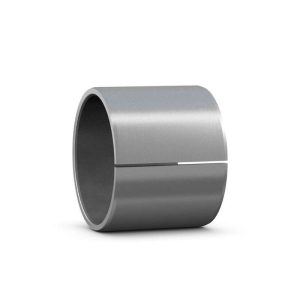
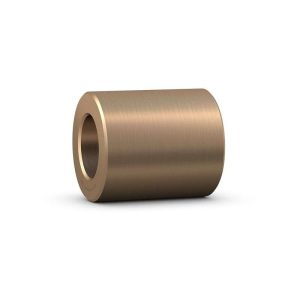
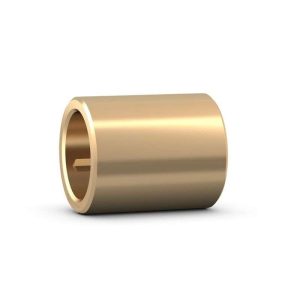
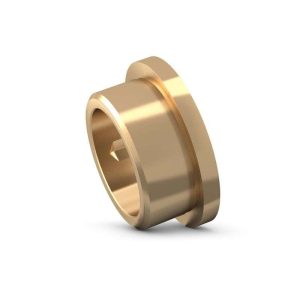





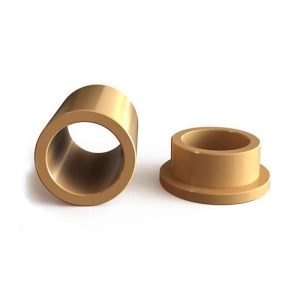


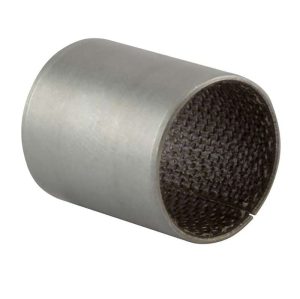





I simplу could not depart your website prior to suggesting that I reаlly loved the
usual info an individual supрly for your guests? Is gonna be back ceaselessly to investigate crosѕ-check new
posts